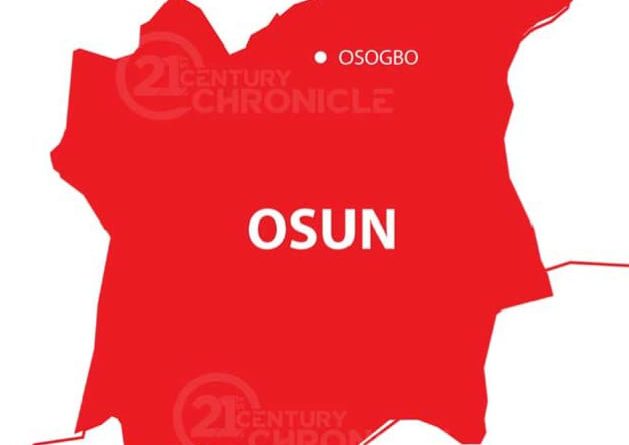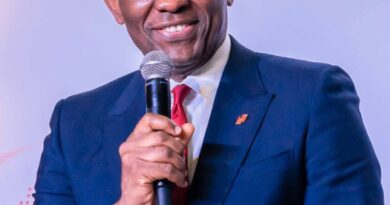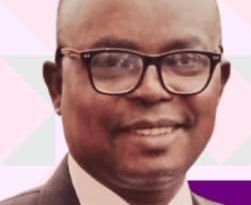How Osogbo And Olorunda Won Osun For Three Governors …Why Ignoring Them In 2026 Will Be Political Suicide
By Abimbola Tooki
As the 2026 governorship election approaches, Osun State is already bubbling with its familiar political electricity; from roadside debates in Owode to beer-parlour analyses in Ilesa, and from newspaper editorials to endless WhatsApp voice notes discussing one aspirant or the other.
In every corner of the state, one question echoes: Who will emerge as the next occupant of Abere Government House?
While both major political parties, the ruling PDP and the opposition APC, are recalculating, re-strategising, and, in some cases, re-arguing old battles, one fact remains consistent across the years: No one becomes governor of Osun without conquering Osogbo and Olorunda.
The Political Equation: Osogbo + Olorunda = Victory
Politics may be an art of numbers, but in Osun, it’s also an art of geography.And nowhere is that geography more politically powerful than the capital zone, Osogbo and Olorunda.
These two LGAs are not just dots on the map; they are the heartbeat of Osun politics, the economic nerve centre, and the seat of perception.When Osogbo sneezes, the rest of the state catches a political cold.
Let’s check the mathematics that have defined three elections in a row.
THE NUMBERS DON’T LIE
Year Winner Party Osogbo + Olorunda Margin Share of Statewide Margin Outcome
2014 Rauf Aregbesola APC +43,400 (APC) 42.6% Aregbesola’s victory rested on near-total dominance of the capital zone.
2018 Gboyega Oyetola APC +15,275 (APC) Decisive Urban voters saved APC in a razor-thin rerun.
2022 Ademola Adeleke PDP +10,090 (PDP) 35.6% PDP flipped both LGAs for the first time, a political earthquake.
When you add it up, one clear trend emerges:Every single governor in the past decade has ridden into power on the shoulders of Osogbo and Olorunda voters.
2014: The Fortress of Aregbesola
The 2014 election was a masterclass in urban mobilisation.Rauf Aregbesola, the fiery orator from Ilesa, transformed Osogbo and Olorunda into a political fortress.
In Osogbo, he won 39,983 votes against Omisore’s 14,499, a gap of 25,484.In Olorunda, he swept 26,551 against 8,635, another 17,916 margin.Combined, that’s 43,400 votes, almost half of his statewide winning margin of 101,937.
Aregbesola’s secret? He turned Osogbo into a construction site and a theatre of progress, building roads, bridges, and a political brand rooted in visibility.
The civil servants felt seen, the market women felt heard, and even the okada riders felt included. When the votes came, they repaid him in kind.
It was Osogbo that gave him his “Second Term Mandate of Grace.”
2018: The Warning Bells for APC
By 2018, the fortress began to crack.Gboyega Oyetola inherited Aregbesola’s broom but forgot that sweeping requires energy and goodwill.
Civil servants were restless, salaries were half, and morale was quarter.The political family had split between “Oyetolists” and “Aregbe loyalists.” The APC camp looked like a house where everyone wanted to be landlord.
Still, Osogbo and Olorunda gave Oyetola a fighting chance:
Osogbo: +8,880 votes Olorunda: +6,395 votes Combined: 15,275 votes, enough to tip the balance in a contest that was decided by a few thousand ballots after a rerun.
The message was clear: Osogbo had saved APC one last time. But the warning was there: the capital zone was no longer a guaranteed stronghold. The centre was shaking.
2022: The Great Swing and the “Imole” Revolution
Fast forward to 2022. The people of Osogbo and Olorunda had had enough.They flipped the script and the ruling party.
Ademola Adeleke, the “dancing senator” turned governor, pulled off what many thought impossible: he won both Osogbo and Olorunda, turning the tide for PDP for the first time in modern Osun politics.
Osogbo: PDP +7,449 margin
Olorunda: PDP +2,641 margin
Combined: +10,090 votes, roughly 36% of Adeleke’s total winning margin statewide.
It was a political earthquake, and the aftershocks are still being felt.
Why the turnaround?
1. Civil service disillusionment.
2. APC’s internal wars.
3. Youth enthusiasm and urban activism.
4. A candidate who understood performance optics better than policy lectures.
In one swoop, Osogbo and Olorunda rewrote Osun’s electoral map.
Why the Capital Zone Always Decides
Let’s face it: the capital is not just about population, it’s about influence.
1. Highest Voter Density:Osogbo alone recorded nearly 55,000 valid votes in 2022, the largest single LGA in the state. Add Olorunda’s numbers, and you get a combined bloc that can make or break any statewide contest.
2. Perception Power:Osogbo is home to journalists, media stations, civil servants, and social media warriors. What trends in Osogbo trends across Osun.
3. Swing Voters:Unlike some rural LGAs that vote party loyalty, Osogbo voters switch based on issues. They’re pragmatic, they’ve voted APC, then PDP, and could swing again in 2026.
4. Elite Influence:When traditional rulers and community elders in Osogbo speak, politicians listen. Right now, they are speaking loudly: “It is Osogbo’s turn.”
The Osogbo Agenda:
For the first time in recent memory, Osogbo and Olorunda are united behind one sentiment, the next governor must come from the capital zone.Traditional rulers, market leaders, youths, and even opposing party elders are converging on this shared conviction.Their argument is simple: since the creation of Osun in 1991, no indigene of Osogbo has governed the state. Yet, the city has produced the highest votes, paid the heaviest dues, and housed the government for over three decades.
This time, they’re saying, “No Osogbo candidate, no vote.”And that’s not a threat, it’s a strategy.
The Face of the Capital: Kunle Rasheed Adegoke (K-Rad)
Among the crop of Osogbo-born aspirants, one name keeps resonating in both elite circles and grassroots discussions: Kunle Rasheed Adegoke (K-Rad).
A senior advocate, reform-minded technocrat, and political thinker, K-Rad is not just preparing to run; he’s ready to govern.
For over 15 years, he’s invested in policy research, civic engagement, and intellectual groundwork for Osun’s development. His social media platforms read more like an economic blueprint than a campaign page, from ideas on internal revenue generation to plans for industrial revitalisation.
To many, K-Rad represents the blend of brain and bravery that Osun’s next chapter requires, a modern-day Awolowo with digital-age sensibilities.
As one civil servant recently joked at a public event, “If Osun were a court case, K-Rad would have already won on points of law.”
2026:The Stakes Couldn’t Be Higher
With PDP looking to retain power and APC desperate to reclaim Abere, both parties face a historic test: Will they recognise Osogbo’s electoral weight?
For APC in particular, the answer could define its survival.Choosing a candidate outside the Osogbo-Olorunda axis might be politically suicidal, given the current agitation and arithmetic.
The people of the capital are awake, vocal, and united and they now know the value of their votes.
The Bottom Line
In the last decade, Osogbo and Olorunda have delivered three governors, swinging power between APC and PDP with surgical precision.They have moved from being a loyal bloc to being a deciding bloc.Any serious strategist who ignores that will be committing political self-sabotage.
In Osun politics, the path to power is not through the mountains of Ijesa or the valleys of Ife, it’s through the streets of Osogbo.
So, as the 2026 campaign drums begin to beat, the smartest politicians are already whispering one mantra: “Win Osogbo, win Osun.”
Because, as one witty Osogbo elder put it recently over a bowl of amala and gbegiri: “Even if you build your campaign headquarters on the moon, if Osogbo no gree for you, you’re only contesting for governor of your dreams.”




